
How To Improve Cannabis Yields Using A Lux Meter
We all know cannabis needs light, but how much? And how do you measure it? Read on to learn all about using a lux meter to boost cannabis yields, prevent plant issues, and optimise the organisation of your grow room.
Cannabis plants love light—no, they worship it. If your goal is to rear an impressive crop of high-quality weed plants, you’ll need to give them light in spades. Whether indoors or out, a good lighting setup involves a careful balancing act of various factors, including the positioning of your plants relative to your light source.
One way growers can get a read on the intensity of light their plants are getting is with a lux meter (aka light meter). While, on its own, a lux meter will only give you half the picture, it can be a useful piece of kit when planning out an indoor grow.
What Is a Lux Meter?
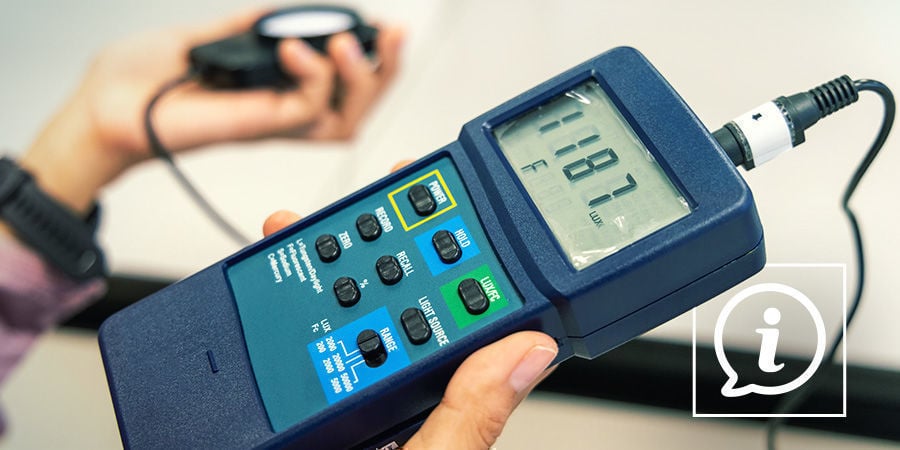
Of course, to get a grasp on lux meters, one first needs to be acquainted with lux itself. In brief, lux (lumens per square metre) is a measurement of the intensity of visible light that hits a surface.
In the case of growing cannabis, a lux meter is used to measure how intense the light is around your plants relative to their distance from the light source. This can give you an indication of whether the amount of visible light your plants are receiving is equally distributed. In other words, it can help you see if some plants, or some parts of plants, are losing out on light, or have too much.
What Is the Difference Between Lux and PAR Meters?
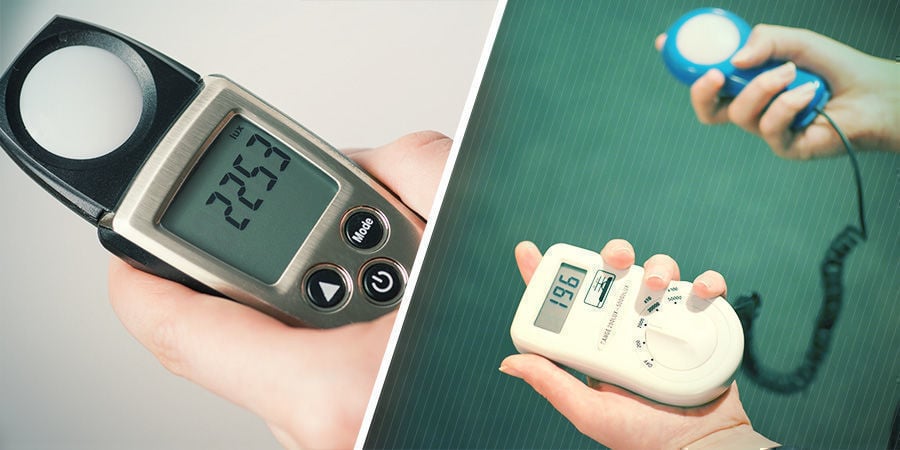
As we mentioned above, although it can give you some indication of light intensity, lux meters leave out some crucial information. This is where PAR meters come in. See, lux measures the intensity of light seen by the human eye (lumens), but cannabis plants absorb light outside of this spectrum too. Not only that, but lux as a measurement gives preference to yellow light, which plants don’t really use for photosynthesis.
PAR (photosynthetically active radiation) meters measure the amount of light cannabis plants can actually use for photosynthesis, including infrared and ultraviolet wavelengths.
So, if that’s the case, why wouldn’t you just pick up a PAR meter for yourself, and skip lux altogether? Well, it’s a simple issue of cost. While a basic light meter can be found for under $25, PAR meters can easily be in the hundreds.
Luckily, it’s not that lux meters aren’t useful, it’s just that they don’t describe the total amount of light your grow room/cannabis is receiving.
How Does a Lux Meter Work?
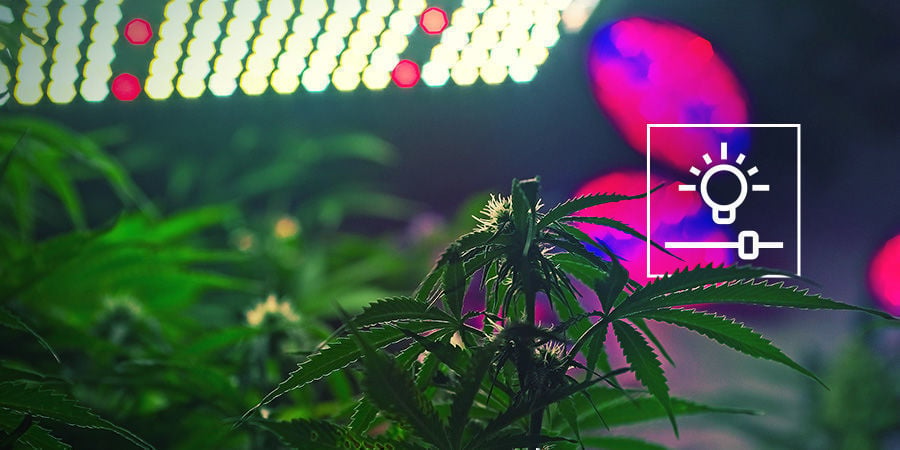
Lux meters work by measuring light intensity within a waveband of 380–700nm. They use a semiconductor called a photodiode to convert the light into an electrical current. From here, growers can make an estimate on whether their plants are receiving enough light (more on that below). The good thing is, using a lux meter couldn’t be easier. As long as you know what to look for, it won’t take long to get used to.
Why Is Correct Lighting Important When Growing Cannabis?
Knowing that cannabis plants use light to photosynthesise, it becomes clear just how necessary it is to provide the type of light that fuels this process and the crucial process of flower development.
Interestingly, cannabis doesn’t prefer the same type of light during veg as it does during flowering. While outdoor growers can rely on the sun to provide the ideal spectrum as the seasons change, indoor growers have to be more hands-on.
During the vegetative stage, where plants amass foliage and gain size, cannabis prefers a "blue" light spectrum, which sits within a waveband of around 400–500nm. Conversely, flowering cannabis desires red light between 620–780nm. To satisfy these requirements, growers can use MH lights for veg and HPS lights for flowering—if growing with HID—or a full-spectrum LED light. Some LEDs also come with switches to manually change the spectrum from blue to red.
As you can see, not only is it important to get a reading on the intensity of illumination, but also the specific wavelengths plants are receiving.
What Are the Benefits of a Lux Meter?
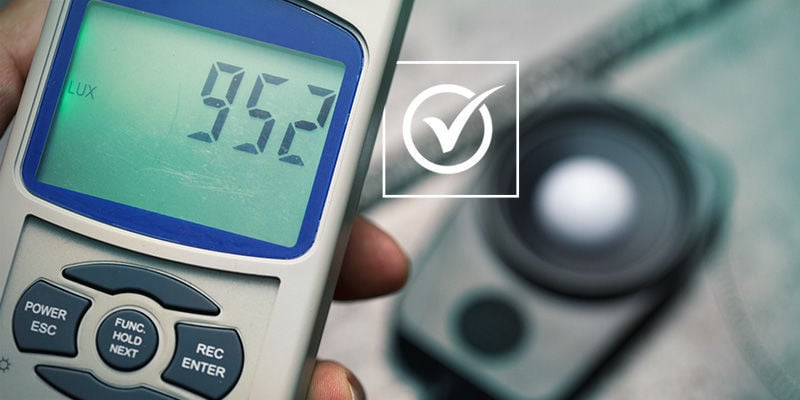
First and foremost, lux meters are handy. They’re inexpensive to source and super easy to use. By allowing you to get a read on the luminous flux in your grow room, you can maximise light exposure for optimal development (i.e. big yields from healthy plants).
On the other side of the coin, you can use a lux meter to see if your plants are receiving too much light, or are just too close to/far from the light source. This, in turn, can help you prevent issues with bleaching, stretching, nutrients, and much more.
Lux meters can also help you identify if the power of a certain lamp is failing or degrading over time—don’t underestimate the convenience of this application. Finally, lux meters can be very eye-opening by showing you which parts of your grow room receive the most versus the least light. From here, you can plan or rearrange your grow room accordingly to avoid wasting any resources.
Lux meter benefits:
- Inexpensive
- Helps you maximise light exposure for bigger yields
- Helps you minimise stress on plants
- Helps you indicate the power of certain types of grow lights
- Tells you where light is most/least intense in grow room
How Much Light Do Cannabis Plants Need?
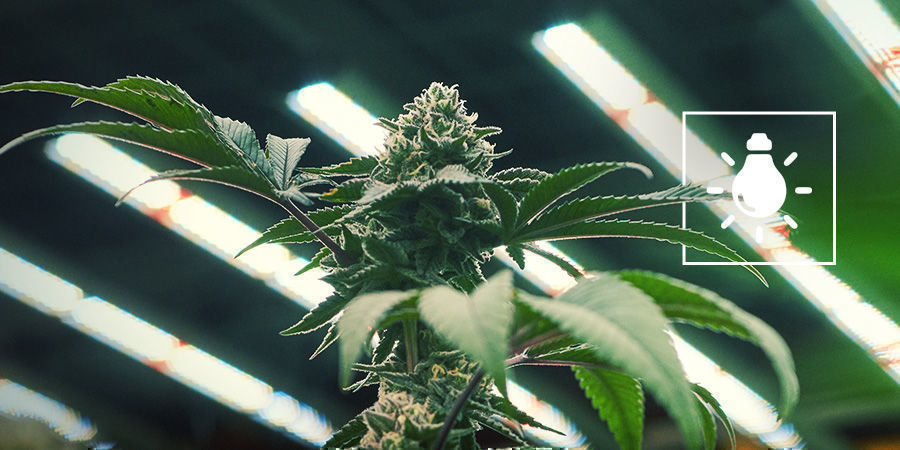
So, you have your lux meter in hand with a reading, but no idea what the numbers indicate. How many lumens do your plants need? During vegetation (once plants have moved beyond the seedling stage and feature a few nodes), between 15,000–50,000 lux is ideal to support robust stem, branch, and foliage development.
In flowering, despite the daylight hours becoming fewer and fewer, plants need more lumens—around 45,000–70,000 lux. Generally, you want to make sure you’re not exceeding 60,000 lux during veg and 75,000 lux in flowering, as this is where plant growth can start to stall and other problems can arise. Also keep in mind that young seedlings and clones require much weaker light than both vegetating and flowering plants. Under 7,000 lux is advised.
Now, given that different strains feature genetics from different parts of the world, it stands to reason that not all cultivars desire the same amount of light. A light-sensitive strain might do fine with lux readings at the lower end of the aforementioned ranges, while a light-hungry strain will be practically insatiable, basking in as much as possible (within the recommended range).
How to Determine the Right Amount of Light for Cannabis Plants
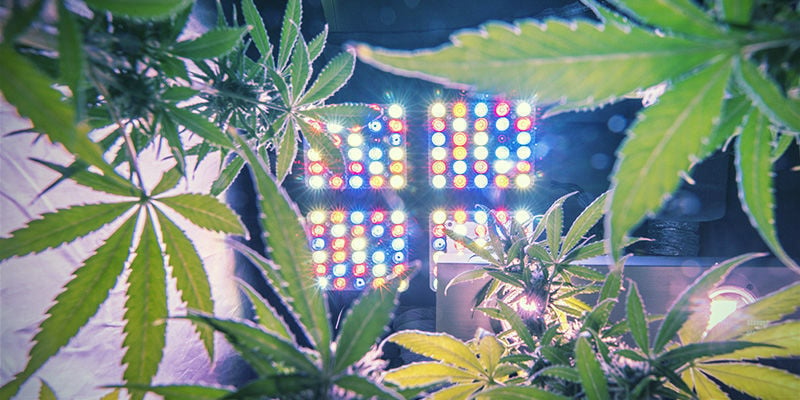
In terms of finding that sweet spot between your light source and the canopy of your plants, note that the ideal distance will differ according to the type of light, and the wattage of said light. Using common 400–600W HIDs as an example, we’d advise allowing 30–60cm between the canopy and the lamps.
From here, you can use the lux meter to give you a reading of how much light plants are actually receiving—from top to bottom. Keep in mind that light intensity diminishes significantly the further away plants are from the source, meaning it’s a fine balancing act between giving your plants as much light as possible while avoiding burning and other issues.
LEDs are a bit of a different beast, especially since many models give off a light spectrum that can’t be accurately determined with a lux meter, but instead with a PAR meter. It’s important to determine which lights are best for your grow before getting started, as there are advantages and disadvantages to each type.
How to Use a Lux Meter
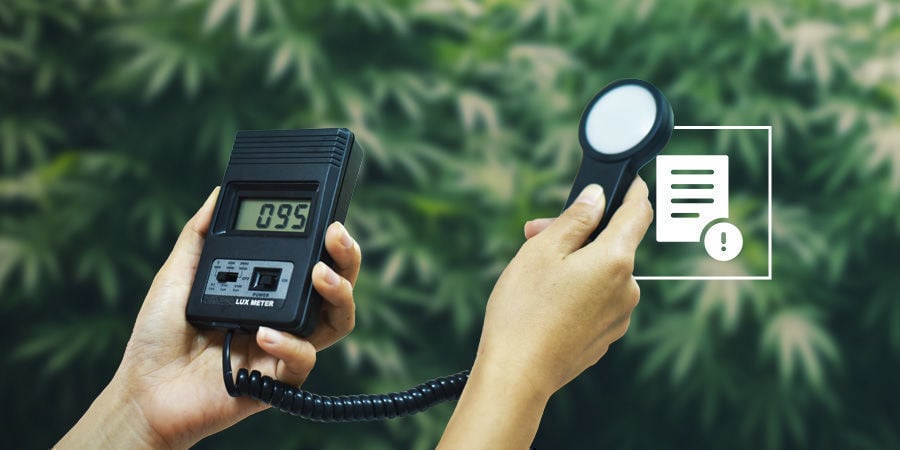
As we’ve alluded to, using a lux meter is one of the easier tasks you’ll face as a cannabis grower. After taking the cap off the sensor, position the meter at the height of your plant’s canopy. Record this reading and adjust the distance between your lights and plants accordingly.
Also, make sure you’re checking the lux around other parts of your plants to see if all the bud sites are exposed to sufficient light. Moreover, check the lux levels around your grow room to see if there are any hot or cold spots.
Lux Meter Apps
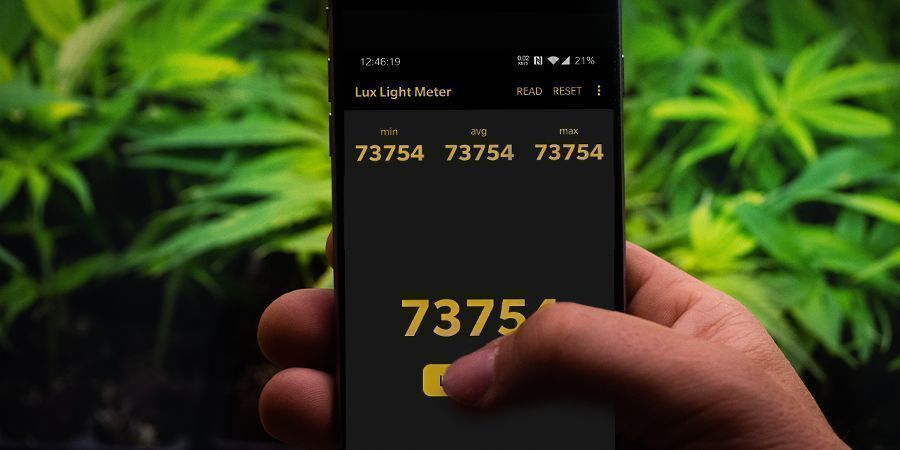
Apart from the traditional lux meter, there are now smartphone apps allowing you to measure light levels as well! These use a sensor, like a traditional meter, but differ in other ways from the standard device. They can be useful, as they often display info in a handy graph or chart format, but many lighting professionals see these apps as inferior to the traditional device, as there is much more opportunity for issues to arise.
Ultimately, smartphone light meters only feature a camera-based sensor and software to process the information: There’s no photodiode, filter, or correction lens to accurately measure luminous flux like a traditional meter.
How to Increase Cannabis Yields With a Lux Meter
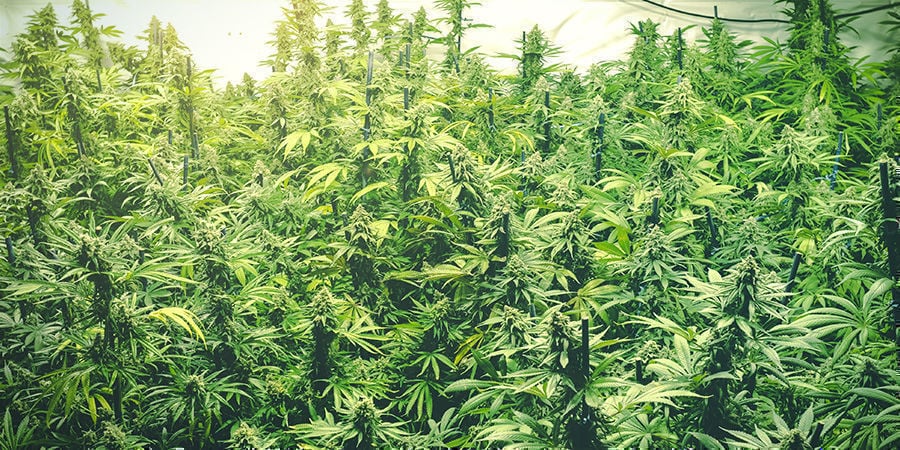
Increasing cannabis yields with a lux meter is a matter of exposing plants to the ideal amount of light. With this measurement device, you can determine the best spot in your grow room and the ideal distance between your plants and their light source to support healthy growth and a super productive flowering phase. After all, there’s nothing worse than using high-quality lights only to end up with inferior yields or, conversely, burnt plants devoid of adequate nutrition.
Is a Lux Meter Necessary for Growing Cannabis?
You might not require a lux meter to successfully grow cannabis, but why wouldn’t you pick one up given the price and availability? At the very least, it can tell you if lighting is inconsistent in your grow room, or if plants are being blasted with way too much. Especially for those using HIDs, CFLs, and “white” LEDs, a lux meter can tell you a lot about how many lumens are reaching the canopy.
-
 5 min
5 May 2025
Simple tips to grow better weed
Think growing great weed is hard? With a few essential weed-growing tips and some basic know-how, anyone can enjoy top-shelf harvests in any setup. Get acquainted with eight essential tips for...
5 min
5 May 2025
Simple tips to grow better weed
Think growing great weed is hard? With a few essential weed-growing tips and some basic know-how, anyone can enjoy top-shelf harvests in any setup. Get acquainted with eight essential tips for...
-
 4 min
20 January 2019
Top 7 Lighting Factors For Growing Marijuana
Growing cannabis indoors gives you control over the environment. The need for precise lighting will make or break your harvest, so it also places more responsibility on you. Here are 7 lighting...
4 min
20 January 2019
Top 7 Lighting Factors For Growing Marijuana
Growing cannabis indoors gives you control over the environment. The need for precise lighting will make or break your harvest, so it also places more responsibility on you. Here are 7 lighting...
-
 4 min
10 April 2018
6 Ways To Increase Cannabis Yields
Increasing cannabis yields is of paramount importantance to all growers. With our 6 simple methods even tiny gardens of just one or two cannabis plants can produce a heavy harvest.
4 min
10 April 2018
6 Ways To Increase Cannabis Yields
Increasing cannabis yields is of paramount importantance to all growers. With our 6 simple methods even tiny gardens of just one or two cannabis plants can produce a heavy harvest.
-
 4 min
16 October 2017
How To Grow Huge Ass Buds: 10 Steps To Success
Cannabis cultivators of all levels have one thing in common. We are all looking for a fat stash of our favourite marijuana. If you want to grow enormous cannabis colas, you need to take 5 minutes...
4 min
16 October 2017
How To Grow Huge Ass Buds: 10 Steps To Success
Cannabis cultivators of all levels have one thing in common. We are all looking for a fat stash of our favourite marijuana. If you want to grow enormous cannabis colas, you need to take 5 minutes...





 United States
United States











